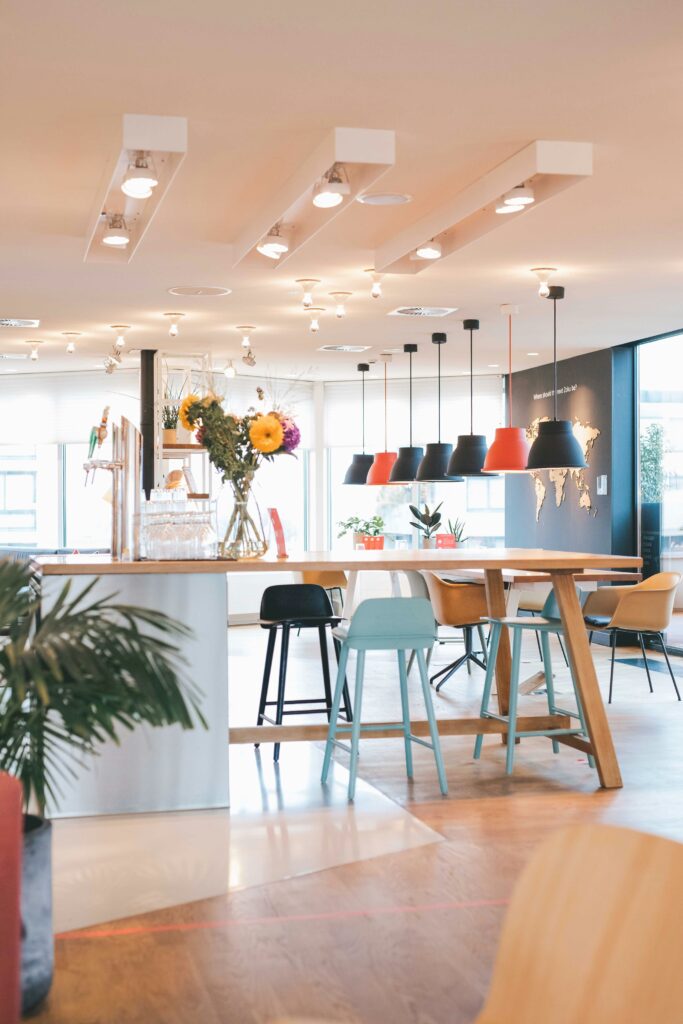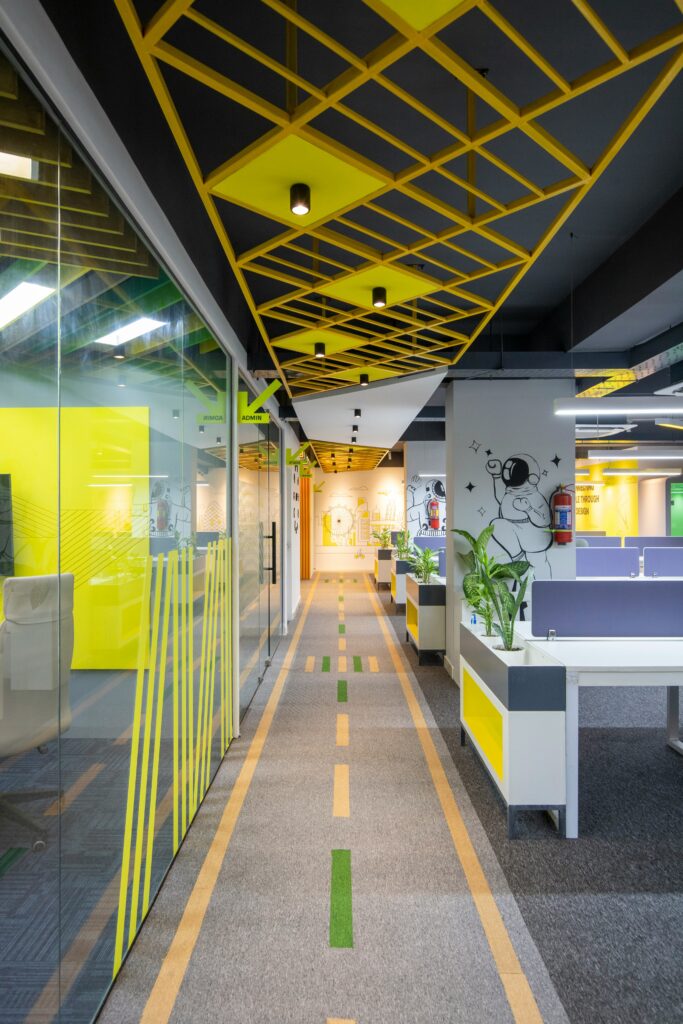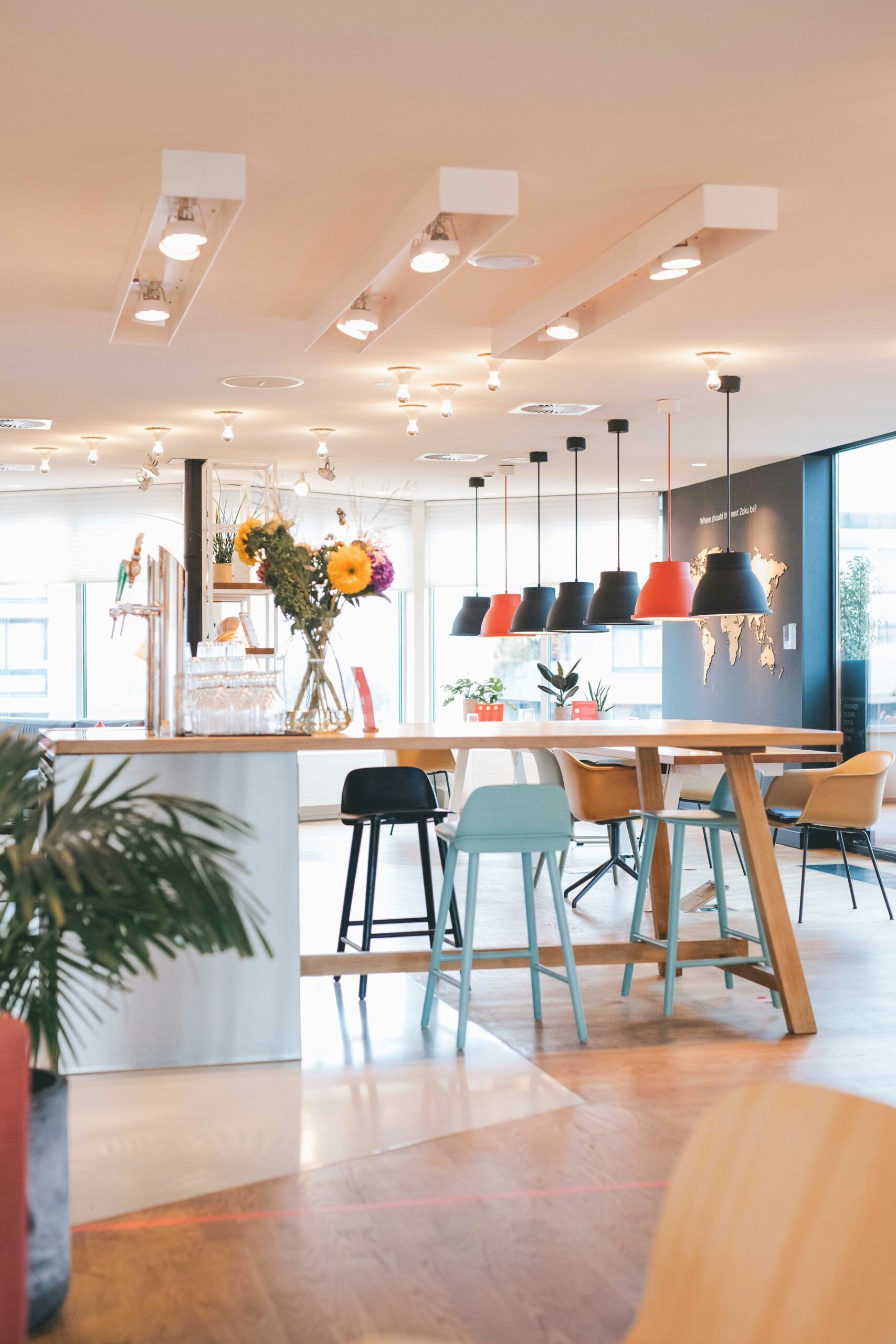By Mercedes Quintanilla
We spend more waking hours at work than anywhere else. While an office doesn’t need to feel like home, it should absolutely support the same core needs: clarity, vitality, and inspired performance. A well-designed workplace is not just beautiful — it’s strategic. It becomes a sanctuary for thinking clearly, leading boldly, and doing meaningful work.
Here’s how intentional interior design can transform a corporate office into a space of purpose and productivity:

BRANDING THAT TELLS A STORY
Designing a space that reflects your brand identity goes far beyond painting walls in brand colors. Done well, it becomes a powerful tool for alignment, loyalty, and impact. Your office should speak for you — even before you do.
When the brand is present in every decision — from furniture to lighting to layout — it creates emotional resonance. Employees feel connected. Clients trust what they see. And the space becomes an extension of your mission, not just your message.
Take Starbucks: their spaces aren’t just functional — they tell a story. That same principle applies to your business. When done with intention, your office becomes a physical manifestation of your company’s soul.
ATTRACT BETTER TALENT AND CLIENTS
The right environment has the power to draw in the exceptional — the right employees, the right partners, and the right clients. Why? Because design is energy. It shapes perception, mood, productivity, and trust.
For employees, a well-designed space boosts creativity, focus, and well-being. For clients, it signals professionalism, clarity, and success. It’s not about luxury — it’s about resonance. Spaces that are aligned with your values inspire people to do their best work and deepen their sense of purpose.
In today’s economy, where talent and attention are more competitive than ever, intentional design is not a luxury — it’s a strategy.
INTERIOR DESIGN DIRECTLY IMPACTS YOUR BOTTOM LINE
This isn’t theory — it’s measurable. Studies from the American Society of Interior Designers (ASID) have shown that well-designed offices significantly increase productivity, reduce errors, and improve employee satisfaction.
In one case, a redesigned insurance office reduced absenteeism from 4.4% to 1.6%, cut error rates by 9%, and improved task processing speed by 137%. Another study revealed a 16% boost in productivity, saving hundreds of thousands of dollars within one year — along with major energy savings and carbon emission reductions.
The takeaway? Design isn’t just aesthetic. It’s economic. A purposeful workplace doesn’t just look better — it performs better.

CULTURE IS DESIGNED — NOT DECLARED
Culture is more than a mission statement on the wall. It’s what people feel the moment they walk in. Great design reinforces values, empowers teams, and creates a sense of belonging. The layout, flow, materials, and light all influence how people connect and collaborate.
When culture is reflected in the environment, it becomes real — not just aspirational.
DESIGN THAT INVITES CREATIVITY AND SELF-EXPRESSION
Creativity doesn’t flourish under rigidity. The most empowering spaces allow people to express their individuality and feel seen. Flexible zones, human-centered furniture, and space for spontaneity are essential.
When people feel safe and inspired, they create their best work. That’s the power of a restorative workplace — one that doesn’t just meet physical needs, but supports emotional and mental well-being.
Final thought:
Your office isn’t just a place of business — it’s a stage for your brand, a vessel for your culture, and a tool for performance. The more intentionally it’s designed, the more powerfully it will serve everyone who steps into it.
References.
• Ware, S. (2020, July 13). What Makes a Creative Work Environment? TruScribe. https://truscribe.com/what-makes-a-creative-work-environment/
•Bill Browning. (2015). The Global Impact of Biophilic Design in the Workplace. HUMAN SPACES. https://greenplantsforgreenbuildings.org/wp-content/uploads/2015/08/Human-Spaces-Report-Biophilic-Global_Impact_Biophilic_Design.pdf
• American Society of Interior Designers | ASID. (s.f.). American Society of Interior Designers. Retrieved September 27, 2021, from https://www.asid.org/impact-of-design/asid

Read the Comments +